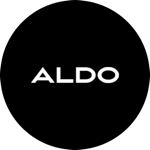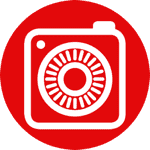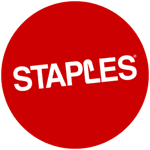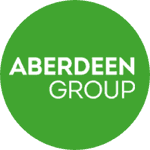Performance studies related to "posts"
-

redBus, a bus booking and ticketing website based in India, undertook a substantial effort to improve their website's INP by 72%. As a result of their efforts, they were able to increase sales by 7%. Permalink Share on Twitter
-

The Economic Times improved CLS from 0.25 to 0.9 and reduced values in the "Poor" range by 65%, and also improved LCP from 4.5 seconds to 2.5 seconds and reduced values in the "Poor" range by 33%. This reduced bounce rates by 43%. Permalink Share on Twitter
-

QuintoAndar reduced LCP by 26% and FID by 72% and saw a 46% reduction in bounce rate, and 87% increase in pages per session, and a 5% improvement in conversion. Permalink Share on Twitter
-

Adobe improved from 7.2 seconds to 3.4 seconds and engaged visit rate increased by 35%, bounce rates decreased by 6%, and the average time spent on page increased by 21% for mobile visitors. Permalink Share on Twitter
-

Carpe improved Largest Contentful Paint by 52% and Cumulative Layout Shift by 41% and saw a 10% increase in traffic, a 5% increase in online store conversion rate, and a 15% increase in revenue. Permalink Share on Twitter
-

Sunday Citizen improved their key performance metrics and were able to achieve 25% improvement in Largest Contentful Paint and 61% in Cumulative Layout Shift at the 75th percentile. This resulted in 4% decrease in bounce rate and over 6% increase in conversion. Permalink Share on Twitter
-

Rakuten 24 ran an A/B test showing improved vitals brought a 53.4% incrase in revenue per visitor, 33.1% increase in conversion rate, 15.2% increase in average order value, 35.1% reduction in exit rate and more! Permalink Share on Twitter
-

Groupe Renault found a strong correlation between Largest Contentful Paint and both their bounce rate and conversion rate, with a 1 second improvement leading to up to a 14 percentage point decrease in bounce rate, and 13% increase in conversions. Permalink Share on Twitter
-

SpeedSense worked with an e-commerce company to improve performance and saw a 7.6% increase in sitewide conversion, translating to roughly a $6 million lift in annual revenue. Mobile transactions increased by nearly 30% and sales per session increased by 16%. Permalink Share on Twitter
-

Ingram Micro focused on reducing Total Blocking Time and saw a 35% increase in organic traffic by improving their homepage TBT by 40%. Permalink Share on Twitter
-

Swappie reduced load time by 23%, LCP by 55%, CLS by 91% and FID by 90% and saw a 42% increase in mobile revenue and a 10 percentage point increase in relative mobile conversion rate. Permalink Share on Twitter
-

NDTV, one of India's leading news stations and websites, improved LCP by 55% and saw a 50% reduction in bounce rate. Permalink Share on Twitter
-

iCook improved CLS by 15% and saw a 10% increase in ad revenue as a result. Permalink Share on Twitter
-

Tokopedia improved LCP by 55% and saw a 23% increase in average session duration. Permalink Share on Twitter
-

Vodafone improved their LCP by 31%, resulting in an 8% increase in sales, a 15% increase in their lead to visit rate, and an 11% increase in their cart to visit rate. Permalink Share on Twitter
-

Yahoo! Japan News reduced CLS by .2, decreasing the number of URLS with poor performance in search console by 98%. As a result, they saw a 15.1% increase in page views per session, 13.3% longer session durations and a 1.72 percentage point decrease in bounce rate. Permalink Share on Twitter
-

Yelp reduced First Contentful Paint (75th percentile) by 45% and Yelp Page Complete (75th percentile) by 25% and saw a 15% improvement in their conversion rate. Permalink Share on Twitter
-

Bing observed that an engineer that improves server performance by 10ms (that’s 1/30 of the speed that our eyes blink) more than pays for his fully-loaded annual costs. Every millisecond counts Permalink Share on Twitter
-

Bridesmaid dress retailer Revelry relaunched its ecommerce site on an updated version of its ecommerce platform and with smaller images. The site loads 43% faster, bounce rates have decreased 8% and conversion is up 30% Permalink Share on Twitter
-

After making improvements to multiple performance metrics (including LCP, CLS and Long Task time), Agrofy saw a 76% reduction in their abandonment rate and a significant boost in engagement. Permalink Share on Twitter
-

SportsShoes.com found that faster-than-average mobile visits were 41% more likely to convert than slower-than-average visits. Permalink Share on Twitter
-

SnipesUSA.com decreased page load speed by 30% and saw its average conversion rate double to from 1% to 2%. Permalink Share on Twitter
-

Rossignol.com improved their load time by 1.9 seconds and cut their Speed Index by a factor of 10, contributing to a 94% improvement in conversion rate when compared to the year prior. Permalink Share on Twitter
-

A Google study over millions of page impressions found that when a site meets the recommended thresholds for the Core Web Vitals metrics, users are at least 24% less likely to abandon a page before it finishes loading. Permalink Share on Twitter
-

ALDO found that on their single-page app, mobile users who experienced fast rendering times brought 75% more revenue than average, and 327% more revenue that those experiencing slow rending times. on desktop, users with fast-rendering times brought in 212% more revenue than average and 572% more than slow. Permalink Share on Twitter
-

When Google Search started using speed as a (very small) ranking signal, they saw a 15%-20% improvement in user-centric perf metrics of pages loaded from search results and a 20% reduction in abandonment. Permalink Share on Twitter
-

Radins.com improved their Speed Index by 51% for the desktop experience and saw a significant increase in conversion (+12%) and a drop in the bounce rate (-25%). Permalink Share on Twitter
-

Furnspace reduced their image payload by 86% resulting in a reduction in load time of 65%. This improved user experience helped double Furnspace’s eCommerce purchase conversion ratio, cut bounce rates by 20%, increase mobile revenue by 7% and dramatically improve SEO. Permalink Share on Twitter
-

Carousell reduced page load time by 65% and saw a 63% increase in organic traffic, a 3x increase in advertising click-thru rate and a 46% increase in first-time chatters. Permalink Share on Twitter
-

Web studio Sparkbox more than doubled Driver Solutions’ conversion rate for organic traffic, moving it from 2.69% to 5.57% after deploying performance updates and AMP pages. Permalink Share on Twitter
-

Zalando saw a 0.7% increase in revenue when they shaved 100ms off their load time. Permalink Share on Twitter
-

Tokopedia reduced render time from 14s to 2s for 3G connections and saw a 19% increase in visitors, 35% increase in total sessions, 7% increase in new users, 17% increase in active users and 16% increase in sessions per user. Permalink Share on Twitter
-

Fashion retailer Missguided removed BazaarVoice for Android visitors. Median page load time improved by 4 seconds, and revenue increased by 26% Permalink Share on Twitter
-

Furniture retailer Zitmaxx Wonen reduced their typical load time to 3 seconds and saw conversion jump 50.2%. Overall revenue from the mobile site also increased by 98.7%. Permalink Share on Twitter
-

COOK increased conversion rate by 7% after cutting average page load time by 0.85 seconds. Bounce rate also fell by 7% and pages per session increased by 10%. Permalink Share on Twitter
-

Rebuilding Pinterest pages for performance resulted in a 40% decrease in wait time, a 15% increase in SEO traffic and a 15% increase in conversion rate to signup. Permalink Share on Twitter
-

Tests of the new, faster FT.com showed users were up to 30% more engaged—meaning more visits and more content being consumed. Permalink Share on Twitter
-

BBC has seen that they lose an additional 10% of users for every additional second it takes for their site to load Permalink Share on Twitter
-

Ancestory.com saw a 7% increase in conversions after improving render time by 68%, page weight by 46% and load time by 64%. Permalink Share on Twitter
-

AliExpress reduced load time by 36% and saw a 10.5% increase in orders and a 27% increase in conversion for new customers. Permalink Share on Twitter
-

According to Google's DoubleClick, when comparing sites that load in 5 seconds to sites that load in 19 seconds, the faster sites had 70% longer average session lengths, 35% lower bounce rates and 25% higher ad viewability than their slower counterparts. Permalink Share on Twitter
-

Google's DoubleClick found that publishers whose mobile sites load in 5 seconds earn up to 2x more mobile ad revenue than sites loading in 19 seconds. Permalink Share on Twitter
-

For every 100ms decrease in homepage load speed, Mobify's customer base saw a 1.11% lift in session based conversion, amounting to an average annual revenue increase of $376,789. Similarly, for every 100ms decrease in checkout page load speed, Mobify's customers saw a 1.55% life in session based conversion, amounting to an average annual revenue increase of $526,147 Permalink Share on Twitter
-

Optimizely added artificial latency to the Telegraph and saw page views plummet: by 11% for a 4 second delay and 44% for a 20 second delay. Permalink Share on Twitter
-

The Trainline reduced latency by 0.3 seconds across their funnel and customers spent an extra £8 million (~$11.5 million) a year. Permalink Share on Twitter
-

Financial Times added a one second delay to every page view and saw a 4.9% drop in the number of articles users read over a 7 day window. A two-second delay resulted in a 4.4% drop, and a three second delay saw a 7.2% drop. After twenty-eight days the two and three second variants both resulted in further drops in engagement. Permalink Share on Twitter
-

Instagram increased impressions and user profile scroll interactions by decreasing the response size of the JSON needed for displaying comments (by 33% for the median and 50% for the 95th percentile for the main endpoint). Permalink Share on Twitter
-

TRAC Research found, in a survey of 300 companies, that the average revenue loss for an hour of downtime was $21,000. For the same set of companies, average revenue loss due to an hour of slow performance (defined as load times exceeding 4.4 seconds) was $4,100. Website slowdowns occurred ten times more often than outages. Permalink Share on Twitter
-

Staples reduced median homepage load time by 1 second and reduced load time for the 98th percentile by 6 seconds. As a result, they saw a 10% increase in their conversion rate. Permalink Share on Twitter
-

GQ cut load time by 80% and saw an 80% increase in traffic. Median time spent on the site also increased by 32%. Permalink Share on Twitter
-

AutoAnything reduced page load time by 50% and saw an 12-13% increase in sales. Permalink Share on Twitter
-

Glasses Direct found that for every second they added to the load time, there was a 6.7% decrease in conversions. In addition, load time for users who did not convert was 3-4 times as high as for converting customers. Permalink Share on Twitter
-

Etam reduces it's average page load time from 1.2s to 500ms and increased conversions by 20%, time on site by 21%, and pages viewed per visit by 28%. Permalink Share on Twitter
-

When YouTube introduced a version of their pages that was 90% lighter, they saw a large increase in traffic in areas with poor connectivity such as Southeast Asia, South America, Africa and Siberia. Permalink Share on Twitter
-

Edmunds decreased load time by 77% and saw a 20% increase in page views, 4% reduction in bounce rate and 3% reduction in ad impression variance. Permalink Share on Twitter
-

Walmart saw up to a 2% increase in conversions for every 1 second of improvement in load time. Every 100ms improvement also resulted in up to a 1% increase in revenue. Permalink Share on Twitter
-

The Obama for America site improved performance by 60% and saw a corresponding increase in conversions of 14%. Permalink Share on Twitter
-

Netflix saw a 43% decrease in their bandwidth bill after turning on GZip. Permalink Share on Twitter
-

While reducing page load from 15 seconds to 2 seconds, Intuit saw a 3% improvement in conversions for every second reduced over 7 seconds, and a 2% improvement in conversions for every second reduced over 5 seconds. Permalink Share on Twitter
-

A presentation from AOL revealed that visitors in the top 10% of site speed viewed 50% more pages than visitors in the bottom 10%. Permalink Share on Twitter
-

Google reported that users who experienced a 400ms delay performed 0.44% fewer searches during the first three weeks and 0.76% fewer searches during the second three weeks. Permalink Share on Twitter
-

Removing one client-side redirect from Google's DoubleClick resulted in a 12% improvement in click-through rate. Permalink Share on Twitter
-

Yahoo increased traffic by 9% for each 400ms of improvement in load time. Permalink Share on Twitter
-

Shopzilla decreased load time by 5 seconds and saw a 12% increase in conversion rate, a 25% increase in page views and a 50% reduction in infrastructure required. Permalink Share on Twitter
-

Mozilla cut load time by 2.2 seconds and saw download conversions increase by 15.4% Permalink Share on Twitter
-

Google finds a 500ms increase in page load results in 25% less searches. Permalink Share on Twitter
-

Etsy saw a 12% increase in bounce rate when they added 160KB of images to their mobile page. Permalink Share on Twitter
-

One second delay in Bing results in a 2.8% drop in revenue. Two second delay results in 4.3% drop. Permalink Share on Twitter
-

Amazon sees a 1% decrease in revenue for every 100ms increase in load time. Permalink Share on Twitter
-

The Aberdeen Group discovered a 1-second delay resulted in 11% fewer page views, a 16% decrease in customer satisfaction, and 7% loss in conversions. Permalink Share on Twitter